INSTITUT SUPERIEUR D'ANTHROPOLOGIE
INSTITUTE OF ANTHROPOLOGY
ONLINE COURSES / COURS A DISTANCE
DEBUT COURS : AVRIL 2023
REGISTER NOW
CHINE – Shanxi - Xinhua reports that traces of the foundations of two houses have been uncovered in northern China’s Shanxi Province. The houses, situated partly underground, have been attributed to the Yangshao culture, and dated to some 5,500 years ago. The smaller house, which shows signs of burning, covered about 320 square feet, while the larger occupied about 420 square feet. A millstone and pottery were found in the larger structure. “The discovery of two house foundations is of great significance to the study of the structure, layout, construction technology, and function of houses in the middle period of the Yangshao culture,” said archaeologist Wang Pujun.
https://www.archaeology.org/news/11300-230322-china-neolithic-dwellings
SOUDAN – 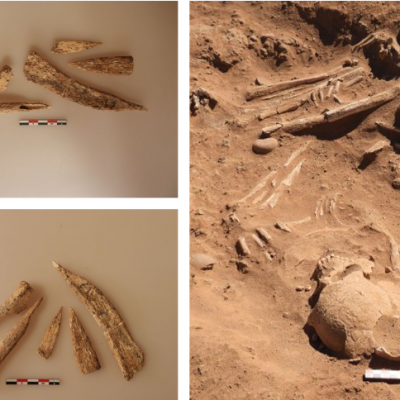 Letti Basin - The study was conducted by researchers from the Institute of Archaeology and Ethnology of the Polish Academy of Sciences, who were researching early communities that dealt with cattle breeding in the Middle Nile Valley to determine whether domestication of cattle occurred independently or were imported from the Middle East. Excavations of a cemetery in the Letti Basin revealed 7,000-year-old burials, with one burial pit containing the remains of an elderly man with fragments of animal skin that were coloured with a red mineral dye – ochre. Ochre is a natural clay earth pigment, a mixture of ferric oxide and varying amounts of clay and sand, which has been used as a colouring agent in Africa for over 200,000 years. The burial pit also contained a small bowl with traces of ochre and 5 bone blades most likely made from cattle bones. A closer examination of the bone blades showed that they had a funnel or gutter form and were still very sharp. Dr. Piotr Osypiński, said: “Given the characteristic shape of the blades, they could have been used to bleed cows, similar to modern African shepherds, such as the Maasai. Without any harm to the animals, cows’ blood is drunk on special occasions, usually mixed with milk. It would be the oldest known record of this type of practice”. In another burial, archaeologists discovered a small oval cavity containing the remains of a young man also buried with animal skin that is coloured with red ochre. The skeleton was placed in the fetal position, however, an anthropological study of the man’s skull revealed a precisely cut round hole measuring 5 cm’s in diameter. “The man showed no signs of advanced healing, so it is likely that this procedure may have been related to his death. It is hard to imagine how 7,000 years ago, people undertook dangerous and complicated surgical procedures using primitive tools,” added Osypiński. “The Neolithic pastoral communities of sub-Saharan Africa are extremely important to the history of this continent. They were at the genesis of the formation of ancient civilisations – including the Ancient Egyptians. Due to their mobile lifestyle and the thousands of years that separate us from them, we still know very little about them” – explained Dr. Osypiński.
Letti Basin - The study was conducted by researchers from the Institute of Archaeology and Ethnology of the Polish Academy of Sciences, who were researching early communities that dealt with cattle breeding in the Middle Nile Valley to determine whether domestication of cattle occurred independently or were imported from the Middle East. Excavations of a cemetery in the Letti Basin revealed 7,000-year-old burials, with one burial pit containing the remains of an elderly man with fragments of animal skin that were coloured with a red mineral dye – ochre. Ochre is a natural clay earth pigment, a mixture of ferric oxide and varying amounts of clay and sand, which has been used as a colouring agent in Africa for over 200,000 years. The burial pit also contained a small bowl with traces of ochre and 5 bone blades most likely made from cattle bones. A closer examination of the bone blades showed that they had a funnel or gutter form and were still very sharp. Dr. Piotr Osypiński, said: “Given the characteristic shape of the blades, they could have been used to bleed cows, similar to modern African shepherds, such as the Maasai. Without any harm to the animals, cows’ blood is drunk on special occasions, usually mixed with milk. It would be the oldest known record of this type of practice”. In another burial, archaeologists discovered a small oval cavity containing the remains of a young man also buried with animal skin that is coloured with red ochre. The skeleton was placed in the fetal position, however, an anthropological study of the man’s skull revealed a precisely cut round hole measuring 5 cm’s in diameter. “The man showed no signs of advanced healing, so it is likely that this procedure may have been related to his death. It is hard to imagine how 7,000 years ago, people undertook dangerous and complicated surgical procedures using primitive tools,” added Osypiński. “The Neolithic pastoral communities of sub-Saharan Africa are extremely important to the history of this continent. They were at the genesis of the formation of ancient civilisations – including the Ancient Egyptians. Due to their mobile lifestyle and the thousands of years that separate us from them, we still know very little about them” – explained Dr. Osypiński.
https://www.heritagedaily.com/2023/03/tools-for-bleeding-cows-uncovered-in-7000-year-old-cemetery/146643
SUISSE – 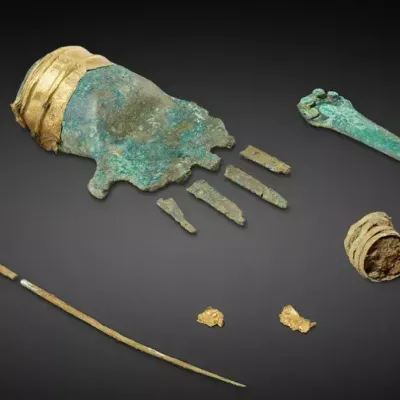 Prêles - Back in 2017, archaeologists in Switzerland come across a truly baffling, yet potentially very important, discovery buried within an ancient grave: a 3,500-year-old bronze hand with a gold cuff around the wrist. It was the first and only time an object like this has ever been unearthed in this part of Europe, so the researchers were unsure what they were dealing with. It appears that the ornate object was a symbol of power, but it’s unclear whether it was once part of a larger sculpture or if it's the top ornament of a staff The Archaeological Service of the Canton of Bern carried out a detailed scientific analysis of the curious object. Their preliminary carbon dating determined that the hand dated between 1,500 and 1,400 BCE, around the Middle Bronze Age of Europe. This dating suggests that it's perhaps the world’s oldest bronze piece representing a part of the human body. If it is indeed a sculpture, it might even be the oldest bronze sculpture in Europe. The so-called “hand of Prêles” was first discovered near Lake Biel in the western province of Bern in the fall of 2017, alongside a bronze dagger blade and a human rib. Then, in the summer of 2018, archaeologists working on the site discovered the skeletal remains of an adult man that appeared to be buried over a much older stone construction. His tomb also contained a bronze brooch, a bronze hair ornament, and remnants of gold plate, perhaps also once part of the bronze hand. By uncovering the identity of this mysterious man, the researchers believe they might be able to decipher the meaning behind the unusual bronze hand. “He must have been a high-ranking character,” added the Archaeological Service of the Canton of Bern. “It is still too early to determine whether the hand was made in the Trois-Lacs region or in a more distant region. We know neither the meaning nor the function attributed to it. Its gold ornament suggests that it is an emblem of power, a distinctive sign of the social elite, even of a deity.”
Prêles - Back in 2017, archaeologists in Switzerland come across a truly baffling, yet potentially very important, discovery buried within an ancient grave: a 3,500-year-old bronze hand with a gold cuff around the wrist. It was the first and only time an object like this has ever been unearthed in this part of Europe, so the researchers were unsure what they were dealing with. It appears that the ornate object was a symbol of power, but it’s unclear whether it was once part of a larger sculpture or if it's the top ornament of a staff The Archaeological Service of the Canton of Bern carried out a detailed scientific analysis of the curious object. Their preliminary carbon dating determined that the hand dated between 1,500 and 1,400 BCE, around the Middle Bronze Age of Europe. This dating suggests that it's perhaps the world’s oldest bronze piece representing a part of the human body. If it is indeed a sculpture, it might even be the oldest bronze sculpture in Europe. The so-called “hand of Prêles” was first discovered near Lake Biel in the western province of Bern in the fall of 2017, alongside a bronze dagger blade and a human rib. Then, in the summer of 2018, archaeologists working on the site discovered the skeletal remains of an adult man that appeared to be buried over a much older stone construction. His tomb also contained a bronze brooch, a bronze hair ornament, and remnants of gold plate, perhaps also once part of the bronze hand. By uncovering the identity of this mysterious man, the researchers believe they might be able to decipher the meaning behind the unusual bronze hand. “He must have been a high-ranking character,” added the Archaeological Service of the Canton of Bern. “It is still too early to determine whether the hand was made in the Trois-Lacs region or in a more distant region. We know neither the meaning nor the function attributed to it. Its gold ornament suggests that it is an emblem of power, a distinctive sign of the social elite, even of a deity.”
https://www.iflscience.com/ancient-3500-year-old-bronze-hand-is-a-mystery-to-archaeologists-68129
CHINE – 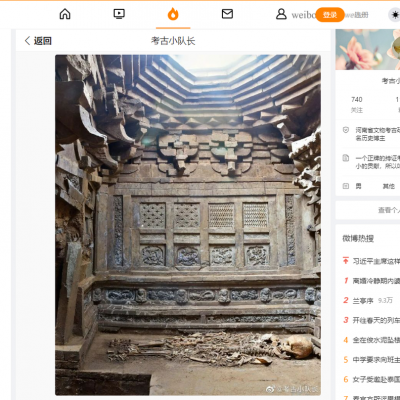
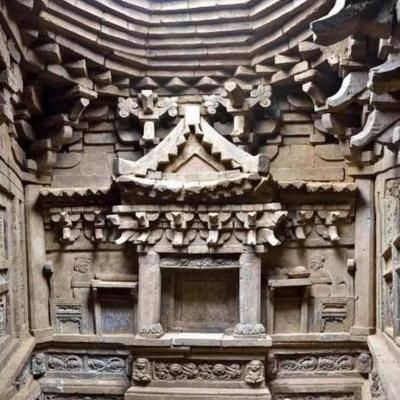 Yuanqu - While doing construction on a pipeline in Yuanqu County of Shanxi province, workers stumbled upon a tomb, the Shanxi Provincial Institute of Archaeology said. Archaeologists were brought in to rescue the site and uncovered a stunning tomb from the Jin Dynasty, the Institute of Archaeology at the Chinese Academy of Social Sciences said in a March 15 news release via China News Network. The 800-year-old tomb was crafted entirely out of carved bricks, and no paint was used. The grave had a stepped passageway leading through a corridor and into the main burial chamber. The main chamber was a square room about 11 feet tall. Three skeletons were found together along one wall. Experts identified the remains as a child between 6 and 8 years old and as two men between 50 and 60 years old. Every wall of the chamber was filled with intricate carvings. The entrance way connected to the south wall. The carvings around this doorway mimicked lattice windows. Straight ahead from the doorway, the north wall had a carving of the tomb’s owner and his wife.The carving almost looks like it was crafted out of wood.The east and west walls are filled with more carving of lattice doors and windows. The top of the chamber curves inward with a skylight opening in the center.Archaeologists also unearthed several porcelain bowls, jars and clay pots from the tomb. They found a document recording the date the land was purchased, the institute said. Based on the faded writing found on this square block, experts dated the tomb between 1190 and 1196.
Yuanqu - While doing construction on a pipeline in Yuanqu County of Shanxi province, workers stumbled upon a tomb, the Shanxi Provincial Institute of Archaeology said. Archaeologists were brought in to rescue the site and uncovered a stunning tomb from the Jin Dynasty, the Institute of Archaeology at the Chinese Academy of Social Sciences said in a March 15 news release via China News Network. The 800-year-old tomb was crafted entirely out of carved bricks, and no paint was used. The grave had a stepped passageway leading through a corridor and into the main burial chamber. The main chamber was a square room about 11 feet tall. Three skeletons were found together along one wall. Experts identified the remains as a child between 6 and 8 years old and as two men between 50 and 60 years old. Every wall of the chamber was filled with intricate carvings. The entrance way connected to the south wall. The carvings around this doorway mimicked lattice windows. Straight ahead from the doorway, the north wall had a carving of the tomb’s owner and his wife.The carving almost looks like it was crafted out of wood.The east and west walls are filled with more carving of lattice doors and windows. The top of the chamber curves inward with a skylight opening in the center.Archaeologists also unearthed several porcelain bowls, jars and clay pots from the tomb. They found a document recording the date the land was purchased, the institute said. Based on the faded writing found on this square block, experts dated the tomb between 1190 and 1196.
https://www.sanluisobispo.com/news/nation-world/world/article273516690.html#storylink=mainstage_lead
MEXIQUE – 
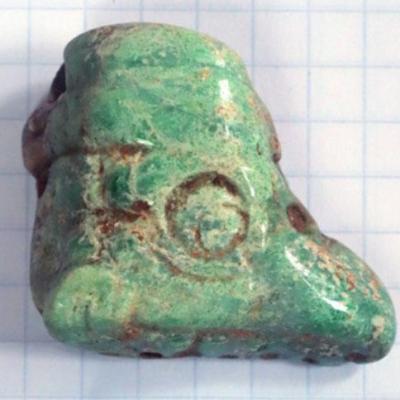 Palenque - The discovery of a burial chamber in the archaeological zone of Palenque with a primary burial, composed of a human skeleton, and a secondary burial, an offering made up of three plates and a niche with various green stone figures, was reported by archaeologists from the National Institute of Anthropology and History (INAH). The head of INAH explained that the skeleton of the individual of the primary burial presents a face-up position and is oriented towards the north, something usual in the ancient funerary customs of Palenque. The skeletal remains of the second deposit would correspond to a woman, who was probably buried in a different place.An additional skull, greenstone figures, and three plates were also recovered from the grave.
Palenque - The discovery of a burial chamber in the archaeological zone of Palenque with a primary burial, composed of a human skeleton, and a secondary burial, an offering made up of three plates and a niche with various green stone figures, was reported by archaeologists from the National Institute of Anthropology and History (INAH). The head of INAH explained that the skeleton of the individual of the primary burial presents a face-up position and is oriented towards the north, something usual in the ancient funerary customs of Palenque. The skeletal remains of the second deposit would correspond to a woman, who was probably buried in a different place.An additional skull, greenstone figures, and three plates were also recovered from the grave.
https://mexicodailypost.com/2023/03/21/inah-archaeologists-discovered-a-burial-chamber-in-palenque-with-a-human-skeleton/?utm_source=rss&utm_medium=rss&utm_campaign=inah-archaeologists-discovered-a-burial-chamber-in-palenque-with-a-human-skeleton
ISRAEL –  Horvat El-Bira i - An ancient mosaic floor dating back to the Byzantine era has been unearthed in central Israel, showcasing a colorful flower design that complements the abundant nature around it. The archeological site, called Horvat El-Bira, was excavated in the 1980s but left untouched since.The area originally contained a Roman-era rural villa, identified by the remains of agricultural installations and buildings visible today. In the Byzantine period, a church was established at the top of the hill, where the colorful floor mosaics were now uncovered.
Horvat El-Bira i - An ancient mosaic floor dating back to the Byzantine era has been unearthed in central Israel, showcasing a colorful flower design that complements the abundant nature around it. The archeological site, called Horvat El-Bira, was excavated in the 1980s but left untouched since.The area originally contained a Roman-era rural villa, identified by the remains of agricultural installations and buildings visible today. In the Byzantine period, a church was established at the top of the hill, where the colorful floor mosaics were now uncovered.
https://www.israel21c.org/ancient-flower-mosaic-unearthed-on-the-israel-trail/
ESPAGNE – 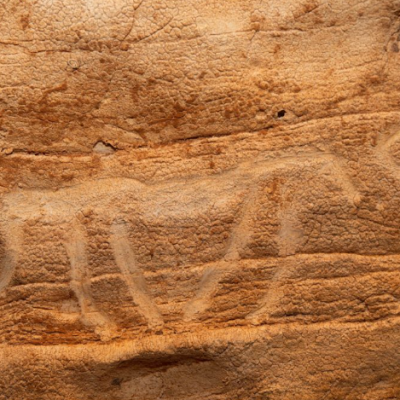
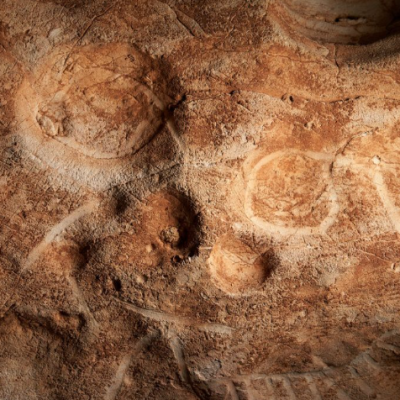 Cova de la Vila - Significant prehistoric rock art has been discovered in La Febro, in southwestern Catalonia. The team that discovered the art inside Cova de la Vila described it as “exceptional, both for its singularity and excellent state of conservation.” In the Cova de la Vila cave in La Febró (Tarragona), in northeastern Spain’s region of Catalonia, more than 100 prehistoric engravings have been found, arranged on an eight-meter panel. According to experts, it is a composition related to the worldview of agricultural societies and farmers of the territory. One of the singularities of this mural is that it is made exclusively with the engraving technique, with stone or wood tools. The engravings include shapes that resemble horses, cows, suns, and stars. The set is very homogeneous stylistically and presents few overlaps. From the stylistic point of view, the set is part of the post-Paleolithic schematic art. It is an art associated with peasant and livestock communities during the transition period between the Chalcolithic and the Bronze Age, that is, between 5,000 and 3,000 years BC. In Catalonia, these types of ensembles, in underground cavities, are very rare, being the case of the Sala dels Gravats of the karstic complex of Cova de la Vila exceptional for being inside a cave and possibly associated with an archaeological context. The rock art collection of the Sala dels Gravats of the Cova de la Vila karstic complex is completely unique. Despite the fact that its research phase has not yet begun, all indications point to it being one of the best compositions of post-paleolithic subterranean abstract art in the entire Mediterranean region. On one of the cave walls, a large number of schematic representations have been discovered. The engraving panel is made up of five horizontal lines, one on top of the other, with different engraved figures that each have their own meaning and symbolism. Various figures such as quadrupeds, zigzags, linear, angular strokes, and circles are represented. There are several zoomorphs (possibly bovids and equines), steliforms (single and/or stars), and reticulates that stand out. There’s also a composition that looks like an ‘eyeballed’ idol. The overall aesthetic is very consistent, with few stylistic overlaps. The distribution of the various elements suggests that it could be a composition: zoomorphic in the lower part of the panel, reticulated, particularly in the central part, and steliform in the upper part of the group, with an eye in the upper part of the group.
Cova de la Vila - Significant prehistoric rock art has been discovered in La Febro, in southwestern Catalonia. The team that discovered the art inside Cova de la Vila described it as “exceptional, both for its singularity and excellent state of conservation.” In the Cova de la Vila cave in La Febró (Tarragona), in northeastern Spain’s region of Catalonia, more than 100 prehistoric engravings have been found, arranged on an eight-meter panel. According to experts, it is a composition related to the worldview of agricultural societies and farmers of the territory. One of the singularities of this mural is that it is made exclusively with the engraving technique, with stone or wood tools. The engravings include shapes that resemble horses, cows, suns, and stars. The set is very homogeneous stylistically and presents few overlaps. From the stylistic point of view, the set is part of the post-Paleolithic schematic art. It is an art associated with peasant and livestock communities during the transition period between the Chalcolithic and the Bronze Age, that is, between 5,000 and 3,000 years BC. In Catalonia, these types of ensembles, in underground cavities, are very rare, being the case of the Sala dels Gravats of the karstic complex of Cova de la Vila exceptional for being inside a cave and possibly associated with an archaeological context. The rock art collection of the Sala dels Gravats of the Cova de la Vila karstic complex is completely unique. Despite the fact that its research phase has not yet begun, all indications point to it being one of the best compositions of post-paleolithic subterranean abstract art in the entire Mediterranean region. On one of the cave walls, a large number of schematic representations have been discovered. The engraving panel is made up of five horizontal lines, one on top of the other, with different engraved figures that each have their own meaning and symbolism. Various figures such as quadrupeds, zigzags, linear, angular strokes, and circles are represented. There are several zoomorphs (possibly bovids and equines), steliforms (single and/or stars), and reticulates that stand out. There’s also a composition that looks like an ‘eyeballed’ idol. The overall aesthetic is very consistent, with few stylistic overlaps. The distribution of the various elements suggests that it could be a composition: zoomorphic in the lower part of the panel, reticulated, particularly in the central part, and steliform in the upper part of the group, with an eye in the upper part of the group.
https://arkeonews.net/unique-and-very-well-preserved-prehistoric-engravings-found-in-southwestern-catalonia/
EGYPTE – 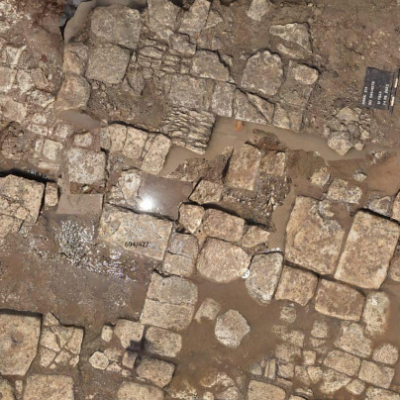 Heliopolis -Heliopolis, meaning “City of the Sun”, was one of the oldest cities of Ancient Egypt that dates from the Predynastic Period. Heliopolis was the cult centre of the sun god, Atum (who later became identified with Ra and then Horus), where Kheperkare Nakhtnebef of the 30th dynasty constructed a sun temple in dedication. A team of archaeologists from the Institute of Egyptology at Leipzig University, working in collaboration with the Egyptian Ministry of Tourism and Antiquities, have uncovered more remains of the sun temple while conducting excavations in the surrounding area of the Matriya Open Museum. The team found traces of flooring made from white ash and mud-brick buildings, in addition to a number of quartzite stone from the era of Horemheb, who was the last pharaoh of the 18th Dynasty of Egypt. Excavations also revealed stonework from the reign of Psamtik II, a pharaoh who ruled during the 26th Dynasty, sections of limestone flooring, a royal statue yet to be identified, the base of a statue of King Ramses II, and a large inscription written on pink granite. Dr Dietrich Raue, curator of the Egyptian Museum at Leipzig University said: “The mission also succeeded in uncovering several parts of statues of King Ramses II made of quartz stone and a piece from the era of King Ramses IX.” The mission has been excavating the vicinity of the sun temple since 2012, where in 2018 they announced the discovery of reliefs and inscriptions built by Kheperkare Nakhtnebef from the 30th Dynasty, a number of temple building components and statue fragments, fragments of quartzite statues of Rameses II, an obelisk fragment from the time of Osorkon I, as well as a sanctuary for the deities Shu and Tefnut from the time of Psamtik II.
Heliopolis -Heliopolis, meaning “City of the Sun”, was one of the oldest cities of Ancient Egypt that dates from the Predynastic Period. Heliopolis was the cult centre of the sun god, Atum (who later became identified with Ra and then Horus), where Kheperkare Nakhtnebef of the 30th dynasty constructed a sun temple in dedication. A team of archaeologists from the Institute of Egyptology at Leipzig University, working in collaboration with the Egyptian Ministry of Tourism and Antiquities, have uncovered more remains of the sun temple while conducting excavations in the surrounding area of the Matriya Open Museum. The team found traces of flooring made from white ash and mud-brick buildings, in addition to a number of quartzite stone from the era of Horemheb, who was the last pharaoh of the 18th Dynasty of Egypt. Excavations also revealed stonework from the reign of Psamtik II, a pharaoh who ruled during the 26th Dynasty, sections of limestone flooring, a royal statue yet to be identified, the base of a statue of King Ramses II, and a large inscription written on pink granite. Dr Dietrich Raue, curator of the Egyptian Museum at Leipzig University said: “The mission also succeeded in uncovering several parts of statues of King Ramses II made of quartz stone and a piece from the era of King Ramses IX.” The mission has been excavating the vicinity of the sun temple since 2012, where in 2018 they announced the discovery of reliefs and inscriptions built by Kheperkare Nakhtnebef from the 30th Dynasty, a number of temple building components and statue fragments, fragments of quartzite statues of Rameses II, an obelisk fragment from the time of Osorkon I, as well as a sanctuary for the deities Shu and Tefnut from the time of Psamtik II.
https://www.heritagedaily.com/2023/03/new-discoveries-at-the-matriya-sun-temple/146592
VIET- NAM – Duc Pho - The Sa Huynh Civilisation relic site in Duc Pho township of the central province of Quang Ngai has earned a special national status as recognised by the Prime Minister recently. Tran Hoang Tuan, Standing Vice Chairman of the People’s Committee, said that in 1909, French archaeologist M.Vinet discovered antiquities of the Sa Huynh Civilisation. These ancient artifacts first appeared about 3,000 years ago and ended in the first century AD. Through different excavations, archaeologists continually found traces of a civilisation, including about 500 burial jars containing many accompaniments, across the coastal central, southeastern, and Central Highlands regions. Among those localities, Quang Ngai is considered the cradle of the Sa Huynh Civilisation as it is home to 26 relic sites among the over 80 sites discovered and excavated, he noted.
https://en.vietnamplus.vn/sa-huynh-civilisation-relic-site-in-quang-ngai-earns-special-national-status/250433.vnp